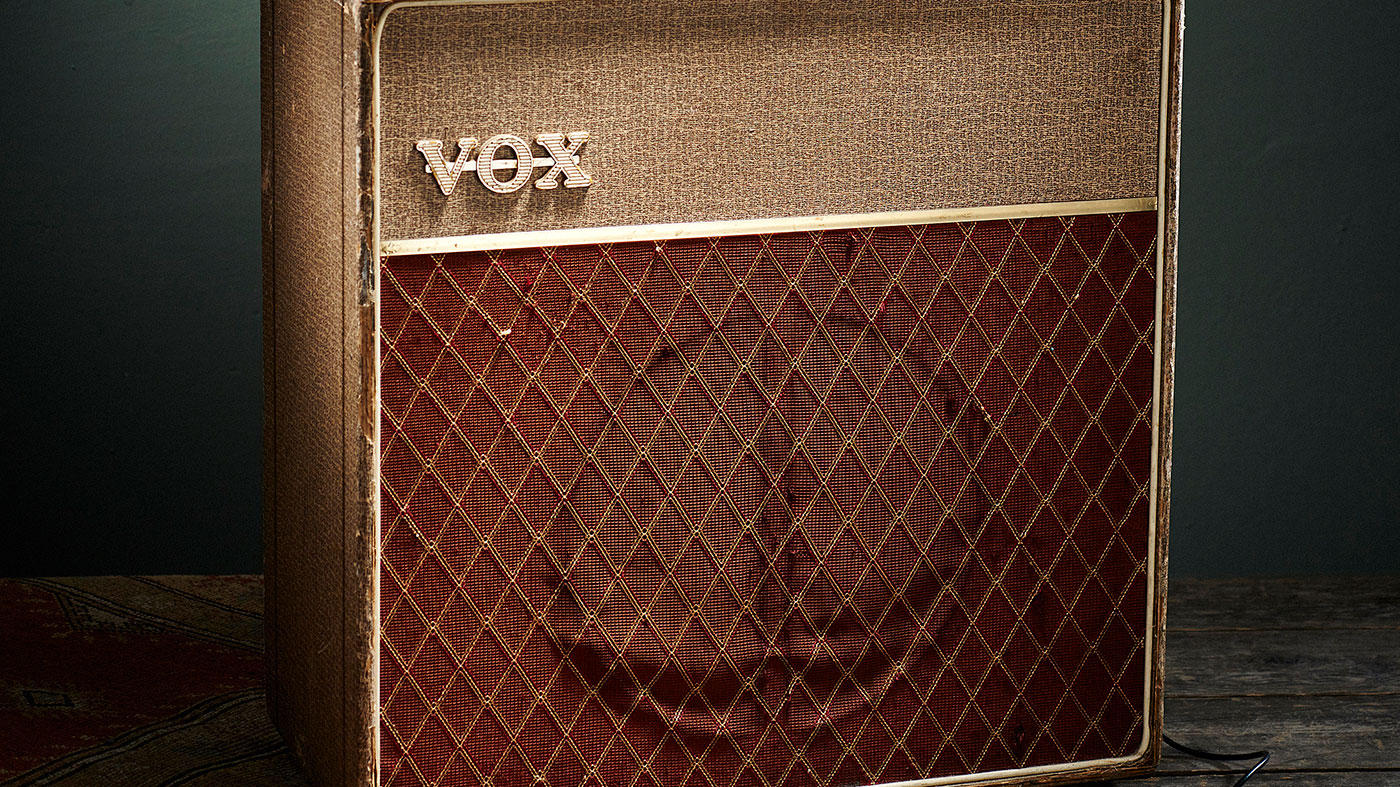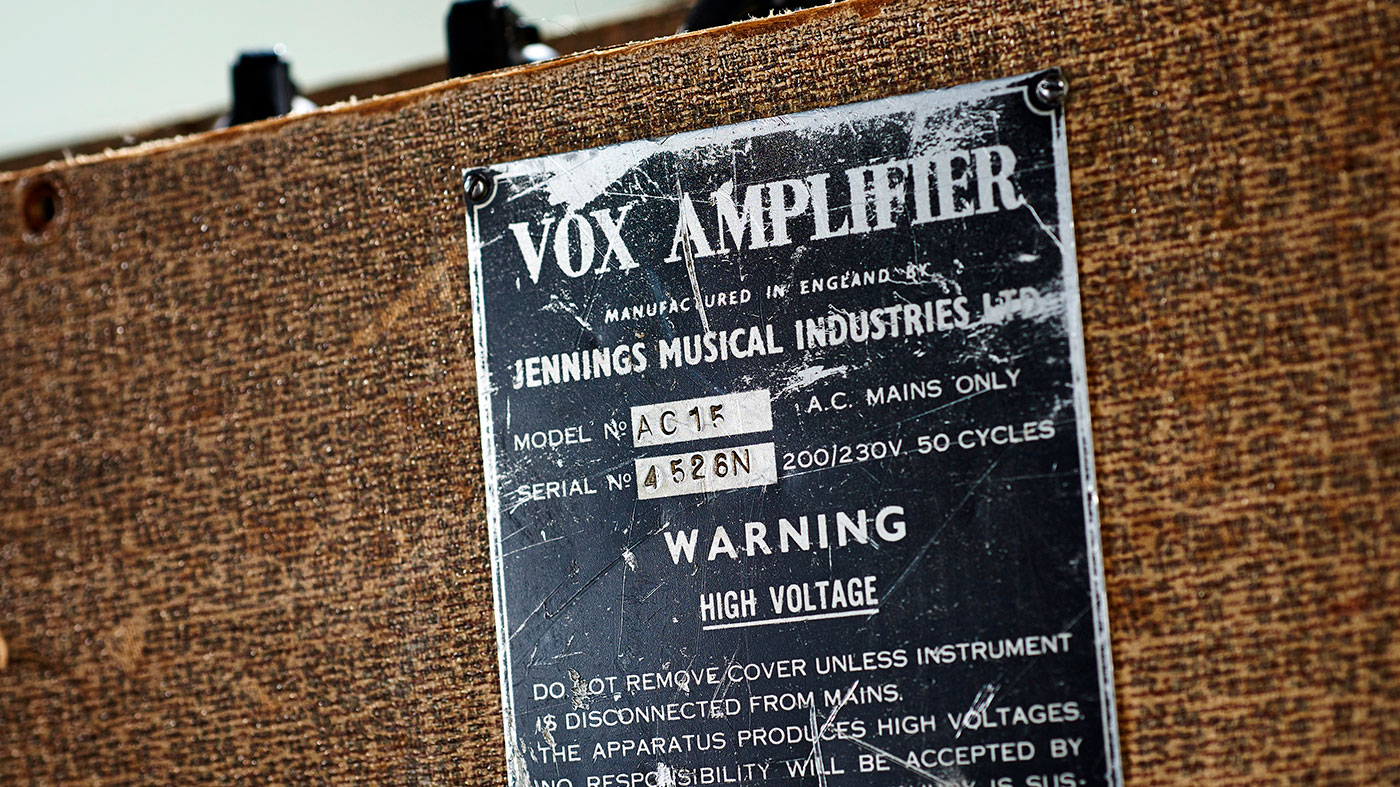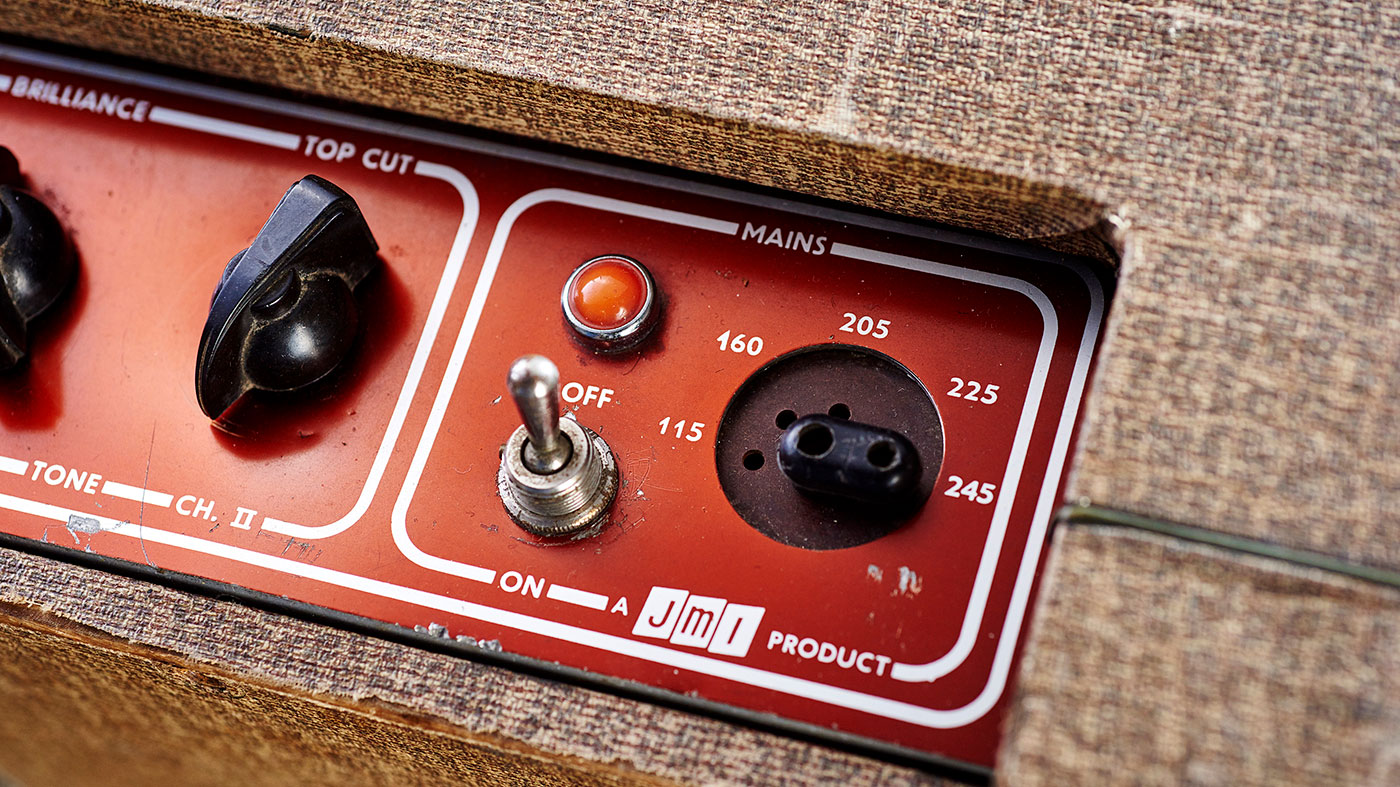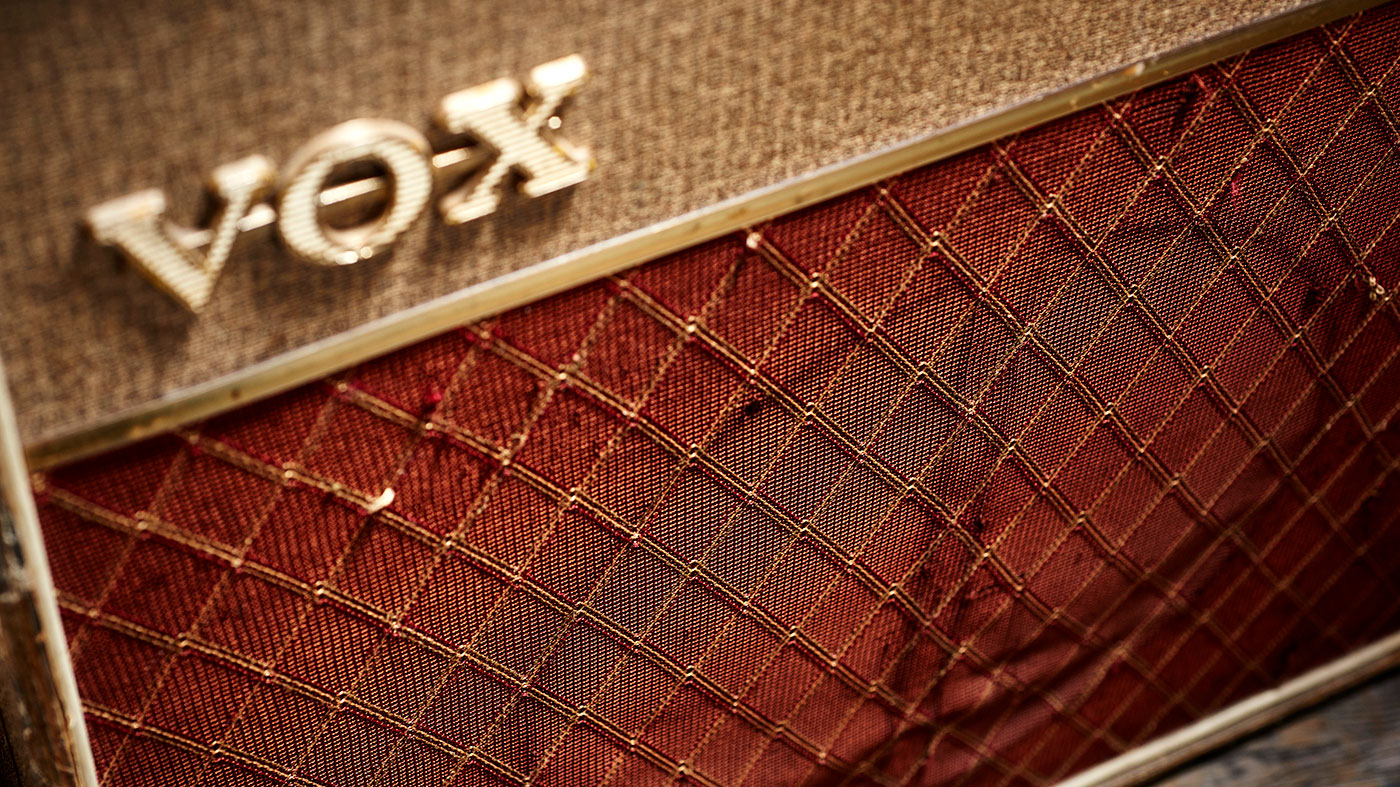Classic gear: Vox AC15
Vox turns a page in rock ’n’ roll history with its debut guitar amp

The AC15 - Vox’s first dedicated electric guitar amplifier - arrived in January 1958 during the heyday of rock ’n’ roll after a cultural tidal wave of innovative musical styles and technology originating from America had washed over Britain.
The electric guitar/amplifier market certainly had its roots in the USA, but with a trade embargo in place amid a booming demand from the UK’s rapidly flourishing homegrown music scene, such items were in short supply.
The first AC15s came in a cream-coloured Rexine covering and sported Vox’s now iconic diamond-patterned grille cloth
Keen to fill the gap, Tom Jennings of Jennings Musical Industries (JMI) decided to recruit the musical know-how and technological expertise of Dick Denny. JMI had previously developed the Univox, Vox Amplifier and ‘G-Series’ amplifiers, although these products were not aimed at the electric guitarist exclusively. Dick, on the other hand, was a gigging musician with a firm understanding of electric guitars who had turned his hand to designing and building his own guitar amp to order.
However, his solo attempts at taking it to market proved unsuccessful and shortly after accepting Tom’s offer of £25 for the design, Dick jumped onboard at JMI to begin working with engineer Derek Underdown on getting the amplifier into mass production.
Although the amp’s name was soon shortened to ‘A.C. 15’, upon release it was referred to as the Vox A.C.1/15. in an effort to draw attention to the fact that it operated on the safer and less noisy non-DC/direct mains alternating current (‘A.C.’); it was Vox’s first amplifier of the series (‘1/’); and, at 15 watts, it packed a powerful punch (‘15’). Often referred to as ‘TV-front’ due to their appearance, the first AC15s came in a cream-coloured Rexine covering and sported Vox’s now iconic diamond-patterned grille cloth.

As guitarists often sat behind their amps in those days (namely, prior to the now-standard ‘backline’ stage setup), the AC15’s control panel was located on the top of the chassis, facing the rear for ease of use.
Originally, the panel was black and featured a black three-way switch to select vibrato speed, along with three white knobs consisting of a tone control and independent volume controls for each of the two channels (‘vibrato’ and ‘normal’). Both channels included two separate inputs each, totalling four, with jack surrounds coloured black and white for normal and vibrato channel inputs respectively.
Want all the hottest music and gear news, reviews, deals, features and more, direct to your inbox? Sign up here.
1960 was a period of great change for the AC15 during which time its third and final circuit design
The AC15’s original circuit comprised two ECC83 valves, along with two EL84 power valves and a 5Z4 rectifier valve. Its built-in vibrato circuit was identical to that of JMI’s Vibravox phase shift/modulation effects unit and utilised a further two ECC83s and an ECC82 valve. When an updated circuit design appeared at the beginning of 1960, the Vibravox sound was abandoned in favour of a simple ECF82-valve-powered tremolo effect, at which point the ‘vibrato’ controls moved from the control panel to the rear of the amp.
1960 was a period of great change for the AC15 during which time its third and final circuit design featuring the original phase shift-style vibrato was rolled out and the effect’s controls returned to the top panel. In addition, the amp’s single 12-inch speaker changed from a Goodmans Audiom 60 to a Celestion T530, while the entire cabinet received a major aesthetic overhaul including fawn Rexine covering, brass vent louvers, a split front and a leather handle.
1963 saw the AC15 in further guises of black and Basketweave covering, although by the following year, JMI had ceased its production. Its 2x12-inch speaker sibling, the AC15 Twin, carried on for a short while afterwards until Vox dropped all but two valve amplifiers from its range (the AC30 Twin and AC50 Super Twin) in 1966.
1962/’63 Vox AC15

1. Serial number
Black/silver metal serial number plate (version 4) stamped ‘AC15’ & ‘4526N’
2. Cabinet
Baltic Birch plywood; 20¾ inches wide by 20¾ tall by 10¼ deep; split front; twopiece open wooden back; rounded corners; full (to rear) control panel cut-out
3. Ornamentation
Fawn Rexine covering; two brass vent louvers; leather handle; white vinyl front piping; gold fascia front strip; brownbacked diamond grille cloth; horizontal one-piece cast plastic Vox motif
4. Circuit
Contempo chassis (steel/ aluminium); third AC15 circuit version; Vibravox phase shift/modulation vibrato; valves: EZ81, EF86, three ECC83/12AX7, ECC82/12AU7, two EL84); 15 watts power (minimum); single 12-inch Celestion T530 Azure blue speaker

5. Mains and connections
‘Mains’ control panel section reads: ‘A JMI Product’; ½-inch tall power switch (‘On/Off’); opaque glass dome indicator lamp; voltage selector (‘115, 160, 205, 225 and 245’ volts); four jack inputs: two ‘Channel I’ (‘vibrato’/white jack surrounds) and two ‘Channel II’ (‘normal’/black jack surrounds)
6. Controls
Double-anodised copper/ silver-lined escutcheon panel with six chickenhead knobs in three sections (L-R: ‘Channel I: Speed & Vib - Trem’, ‘Volume: Channel I & Channel II’, and ‘Tone: Ch. I/Brilliance & Ch. II/Top Cut’); silver Hammertone oval ‘egg’ footswitch (vibrato on/off)

The evolution of the Vox AC15
- January 1958 JMI launches first Vox guitar amp, the AC1/15 (later known as the AC15); cream Rexine covering
- 1959 Voltage tap selectors; plastic Vox motif changes from single letters to single mould
- 1960 2-piece wooden back (previously cardboard); 6 knobs (previously 4); Fawn Rexine covering, split front and 2x vents
- 1961 Black escutcheon panel changes to copper colour; AC15 Twin introduced (2x 12” speakers)
- Early 1963 Black covering introduced (smooth then ‘pebble’/textured)
- Mid-1963 Basketweave covering replaces black ‘pebble’ type; black Vox logo SBU polymer handles
- Mid-1964 AC15 discontinued/AC15 Twin continues; copper escutcheon panel changes to grey colour
- Late 1964 Black grille cloth now standard
- Mid-1966 All Vox valve amps discontinued except AC30 Twin and AC50 Super Twin
Rod Brakes is a music journalist with an expertise in guitars. Having spent many years at the coalface as a guitar dealer and tech, Rod's more recent work as a writer covering artists, industry pros and gear includes contributions for leading publications and websites such as Guitarist, Total Guitar, Guitar World, Guitar Player and MusicRadar in addition to specialist music books, blogs and social media. He is also a lifelong musician.


